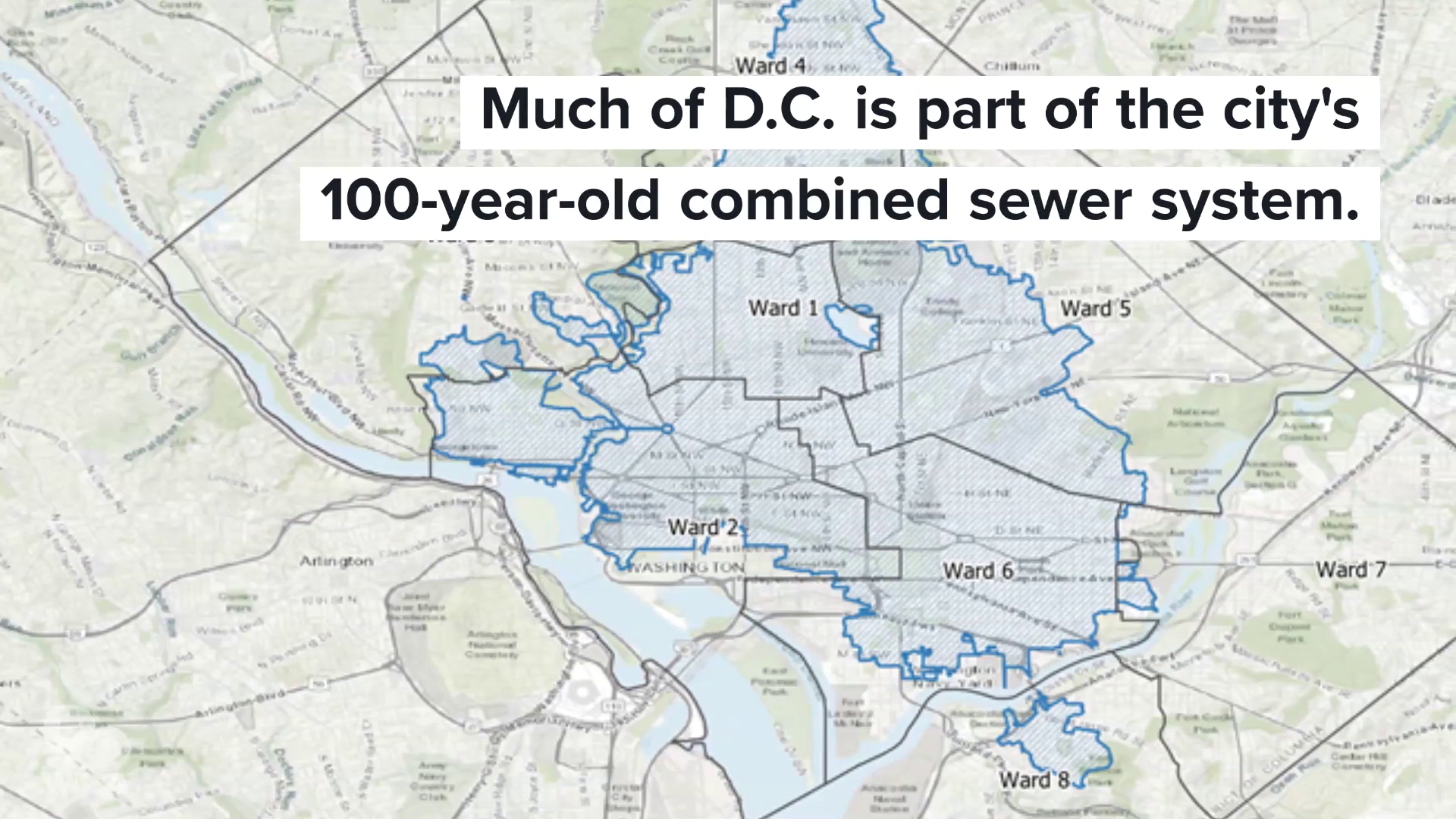WASHINGTON — D.C. Water says the city's tunnel system captured and diverted 170 million gallons of combined sewage during Monday's heavy rains – but that another 50 million gallons overflowed into the District, potentially bringing dangerous bacteria into contact with people.
Parts of the District were pummeled with as much as a month's worth of rain in a single day, with some areas experiencing more than three inches an hour.
Depending upon where you live in D.C., you might have a separate or combined sewer system. In a separate sewer system, sewage from homes and businesses is directly piped to the Blue Plains Advanced Wastewater Treatment Plant. Stormwater has its own dedicated drains and pipes which lead to Rock Creek and the Potomac and Anacostia rivers.
In the parts of D.C. with a combined sewer system – nearly all of Wards 1, 2 and 6 and large portions of Wards 4 and 5 – sewage and stormwater share a common pipe. A dam normally stops sewage from entering the area's waterways – but if the amount of rain exceeds the pipe’s capacity, it will overflow.
The overflow is designed to enter the areas waterways first, to prevent flooding in basements and streets. However, if the drains become blocked, or an unusually high amount of rain falls – like on Monday – the combined sewage may overflow into streets and other places where humans may come into contact with it.
Sewage can contain a whole host of pathogenic bacteria that are capable of making a person extremely ill. Common bacteria found in sewage include:
- Fecal coliforms
- Salmonella
- Shigella
- E. coli
- Giardia Lamblia
A WUSA9 analysis found at least three road closures due to flooding in D.C.'s combined sewer area on Monday, and an additional three in adjacent areas. A spokesman for D.C. Water said flooding in the combined sewer area should always be treated as though it contains sewage overflow. Sewage overflows for large rainfalls can last up to three days.


D.C. Water is currently in the process of a 5-year, $583 million construction project to build the new Northeast Boundary Tunnel, which will run from approximately Robert F. Kennedy Stadium to the Shaw Neighborhood and is expected to add an additional 100 million gallons of stormwater storage capacity. ---
Jordan Fischer is an investigative reporter with WUSA9. Follow him on Twitter at @JordanOnRecord.

